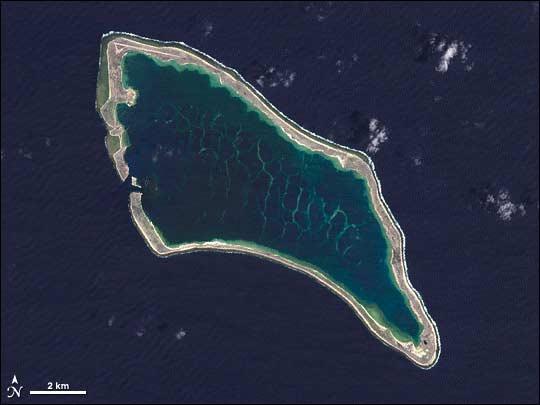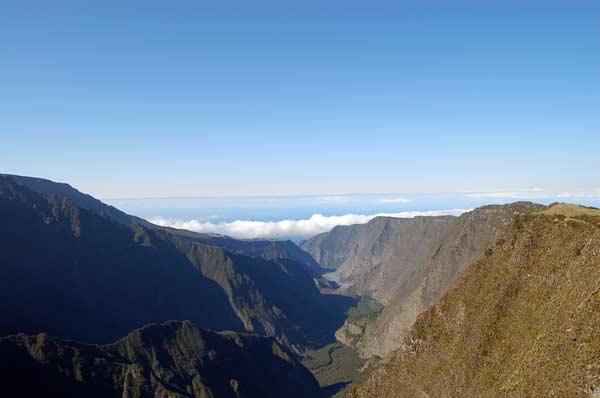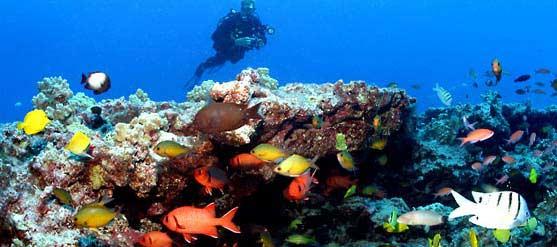
Arctic, South Pacific Landscapes Added to World Heritage List

A unique set of landscapes from around the globe from Siberia to the South Pacific islands have been added to the List of Natural World Heritage sites by UNESCO, it was announced Monday.
The World Heritage Committee, an independent inter-governmental body that designates important cultural and natural sites around the world has been meeting in Brasilia, Brazil, since July 25. The WHC was considering the addition of 32 new sites, six of which are natural landscapes .
Following the recommendations of the International Union for the Conservation of Nature (IUCN), the landscapes of France's La Reunion Island, Russia's Siberian Putorana Plateau and the Phoenix Islands Protected Areas of Kiribati, an island nation made up of 32 coral atolls, have been added to the list.
Two other natural sites were expanded upon IUCN's advice: Monte San Giorgio, from Switzerland to Italy, and Pirin National Park in Bulgaria.
Last week, the WHC announced that the Rainforests of Atsinanana and Florida's Everglades National Park were being added to another list the World Heritage Sites in Danger. This "danger list" focuses international attention and sometimes funding on particularly vulnerable areas. Also last week, the group removed the Galapagos Islands from the danger list, against the recommendations of conservation groups.
France's Reunion Island contains the most significant remaining natural habitats, including a rare forest type, for the conservation of terrestrial biodiversity in the Mascarene Island Archipelago, a group of islands in the Indian Ocean east of Madagascar. Towering volcanoes, including steep rock walls and natural amphitheatres, as well as deep forested gorges and escarpments form dramatic scenery of striking beauty.

"La Reunion contains an impressive mosaic of dramatic landscapes and very valuable ecosystems and also serves as a last refuge for the many threatened and endangered species on the entire Mascarene Archipelago," said Tim Badman, Head of IUCN's World Heritage Programme. "Controlling alien invasive species will be an ongoing challenge in the management of this property."
Sign up for the Live Science daily newsletter now
Get the world’s most fascinating discoveries delivered straight to your inbox.
Russia's Siberian Putorana Plateau represents one of the only centers of plant species richness in the Arctic. The striking natural beauty of Putorana Plateau includes more than 25,000 fjord-like lakes, dozens of deep canyons, rivers and creeks, and thousands of waterfalls.
"The combination of extraordinary landscape diversity, remoteness and naturalness makes the Putorana Plateau one of the truly wild places remaining in the Arctic at a time of increasing pressure on this fascinating region," Badman said. "World Heritage status not only provides a strong and permanent conservation framework but there's a great opportunity to better understand the impacts of climate change in large undisturbed arctic ecosystems."
Kiribati's Phoenix Islands Protected Area is one of the largest marine environments in the world that has remained intact thanks to its remoteness.
"The Phoenix Island's exceptionally healthy species of fish, turtles and its bleaching-resistant corals deserve the highest degree of protection," said Tilman Jaeger, IUCN World Heritage Project Management Officer.
Monte San Giorgio holds the single best known fossil record of marine life in the Triassic period (245 million to 230 million years ago) and conceals important remains of life on land as well. This World Heritage site area was expanded from current Swiss areas to land in Italy.
Bulgaria's Pirin National Park has many important endemic and relict species. Conservationists hope that its new World Heritage listing will help balance tourism in the area with conservation of the diverse and important mountain landscape.

Other new additions to the World Heritage Site list include the Central Highlands of Sri Lanka, Papah?naumoku?kea Marine National Monument in Hawaii (the first U.S. site to be added to the list in 15 years), and the Mount Danxia area of China, which hosts many unusual rock formations.











